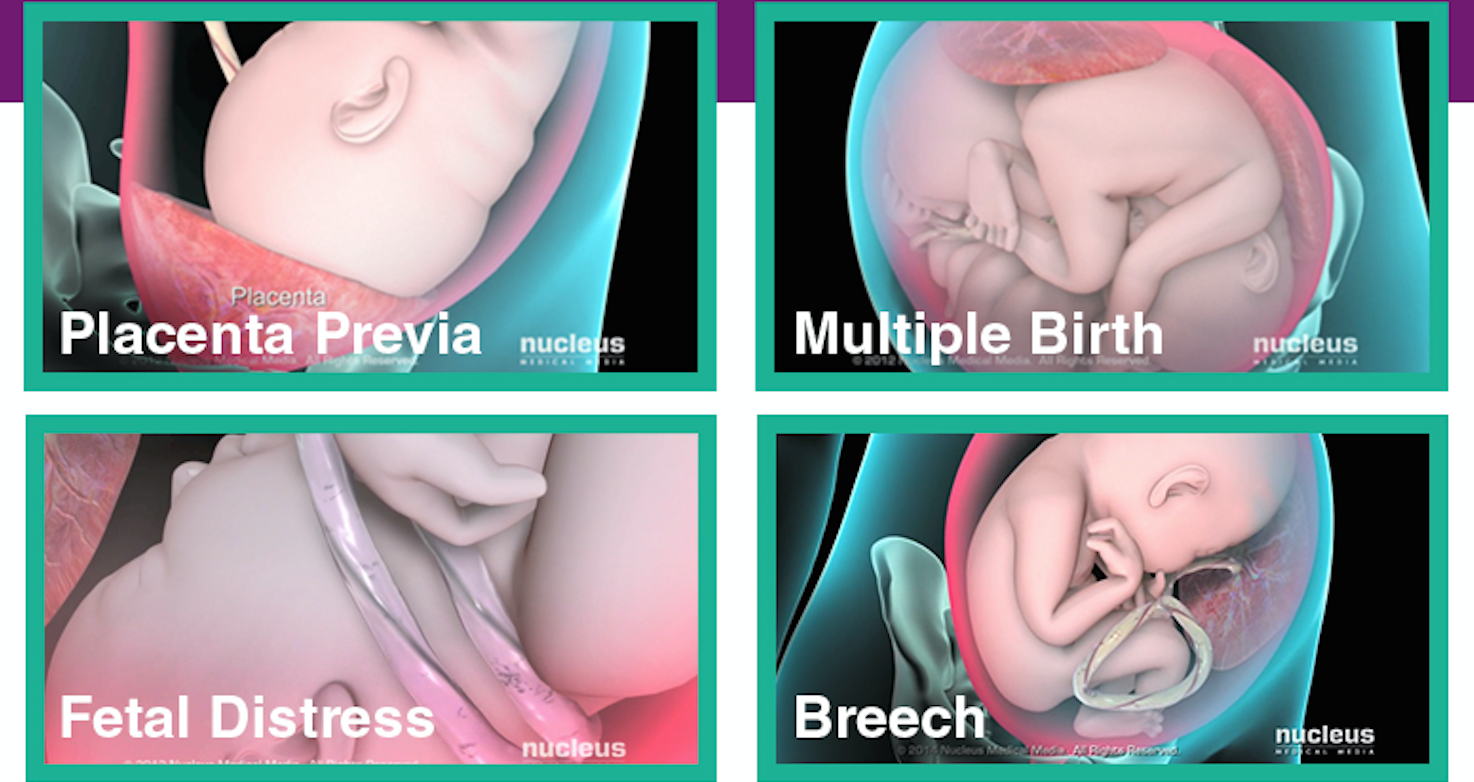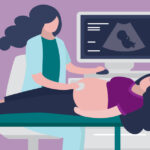Why You May Need A C-Section
April 19, 2016
A cesarean section, also called a C-section, is a surgical procedure in which incisions are made in a woman’s abdomen to deliver a baby. The entire procedure takes 45 minutes to an hour, but requires a hospital stay of three to five days after the surgery. Full recovery from a C-section typically takes six to eight weeks.
Because of the lengthy recovery time associated with C-sections and the risk of complications to the mom and baby, many women wish to deliver vaginally. Despite best intentions to follow the birth plan, there are several scenarios where a C-section might be necessary to protect the health and safety of both the mom and baby.
Placenta Abruption1
The placenta grows with your baby. It is located in the uterus and supplies your baby with food and oxygen through the umbilical cord. When placenta abruption presents, the placenta separates before the baby is born. This can deprive the baby of oxygen and nutrients and cause heavy bleeding for the mother. Placenta abruption typically occurs suddenly and puts both the mom and baby at risk.
Placenta Previa2
In most pregnancies, the placenta attaches to the side or the top of the mother’s uterus. When the mother has placenta previa, the uterus attaches to the lower part of the uterus and the placenta grows and covers the cervix, either partially or completely. Placenta previa may resolve itself naturally. However, if the placenta is across the cervix, especially near the time of delivery, a C-section may be needed. Doctors can usually identify this condition as early as the second trimester. Health care providers can monitor the mom and baby to reduce the risk of severe bleeding.
Prolapsed Cord3
The umbilical cord is your baby’s lifeline to you. It is a tube-like structure that transports nutrients to your baby and carries away the baby’s waste. Prior to or during delivery, the umbilical cord may come down through the cervix and into the vagina before the baby. During labor and delivery the prolapsed cord may become compressed. This deprives the baby of nutrients and oxygen needed for his or her survival. An ultrasound or fetal heart monitor may be used to help detect a prolapsed umbilical cord and its effects on the baby’s health. When a baby’s heart rate is affected, a C-section may be necessary.
Fetal Malpresentation4
Near delivery, most babies settle into an occiput-anterior position. This means that the baby’s head is down and its face is toward the mother’s back; one side of the baby’s back faces the mother’s stomach. This position lines up the baby to fit through the mother’s pelvis as easily as possible. Fetal malpresentation occurs when the baby is in a breech or transverse position.
A breech malpresentation occurs when the baby’s feet face down toward the birth canal. This position does not always require a C-section, although your health care provider may recommend it. A transverse malpresentation occurs when the baby is lying sideways, with its head and feet facing the mother’s flanks. Unfortunately a baby cannot be born vaginally in a transverse malpresentation. Unless the baby can be rotated, a C-section would be necessary.
Dyscotia in Cephalopelvic Disproportion (CPD)5
Dyscotia is a condition where labor and delivery do not progress. Cephalopelvic Disproportion (CPD) occurs when the baby’s head or body is too large to fit through the mother’s pelvis. According to the American Pregnancy Association, CPD is rare but often over-diagnosed. A small or irregular shaped maternal pelvis can cause CPD. Other possible causes of CDP include heredity and diabetes. Under these circumstances, the baby grows too large to pass through the birth canal.
Multiple Births4
Multiple births alone do not require a C-section. Mothers who are delivering multiple babies can deliver vaginally with the assistance of an experienced health care provider. However, pregnancies with multiple babies are at greater risk for complications. In addition, malpresentation occurs in 5 percent to 15 percent of multiple births.
Maternal Medical Conditions
There are several maternal medical conditions that can cause fetal distress, making a C-section necessary. Infections, severe hypertension, and diabetes are a few examples.
Infections and diseases, including herpes or HIV, may require delivery by C-section. The biggest concern is that the infection or disease may be transmitted to the baby during delivery. However, recent developments in antiviral medications may reduce the risk of transmission during delivery.
Both preexisting diabetes (type 1 or type 2) and gestational diabetes can contribute to the baby growing exceptionally large.6,7 Similarly preexisting hypertension (high-blood pressure) and preeclampsia can cause fetal distress, making a C-section necessary.8,9 Diabetes and preeclampsia can cause the baby to have low birth weight (under 5 pounds) or placental abruption.6-9
Prenatal Nutrition
Unfortunately, it’s not possible to eliminate the need for all C-sections. But you can take steps to reduce their risk of diabetes, hypertension and other medical conditions that make the potential for a C-section more likely. Women who are pregnant or thinking about becoming pregnant should start practicing healthy habits. While a balanced diet is preferred, some women may have trouble meeting their daily recommended intakes for certain vitamins and minerals.
Because every pregnancy is different, the Prenate® Vitamin Family includes a line of prenatal vitamins designed to meet the specific nutritional needs of mothers and their babies. The nutrient forms in Prenate® vitamins are selected for absorption and tolerability. The vitamins are taken once daily, with gluten-free and lactose-free options. Talk to your doctor to see which Prenate® prenatal vitamin may be the right choice for you to help fill nutritional gaps.















